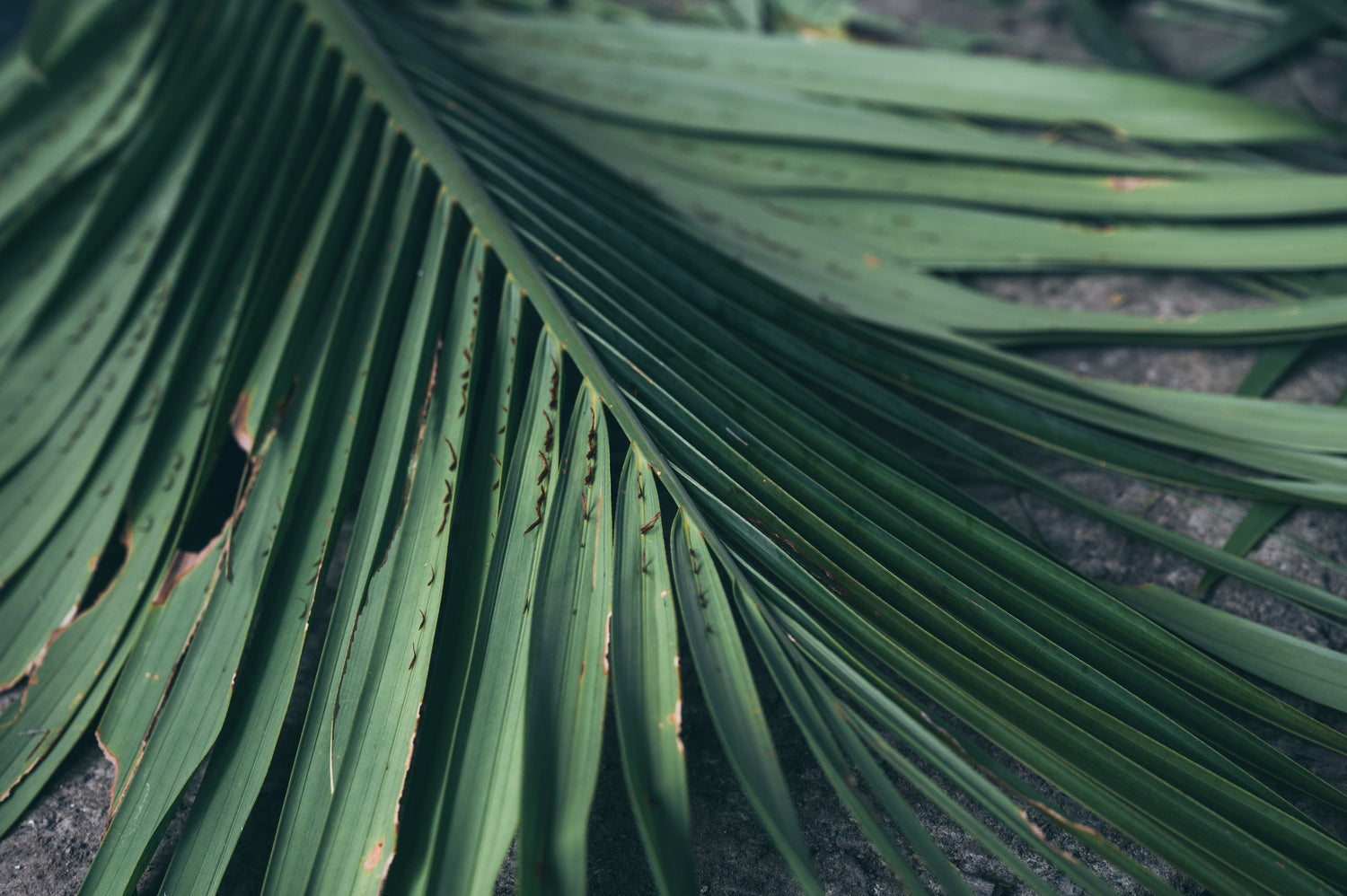Iron deficiency in Coconut palm
Iron (Fe) is an essential micronutrient for coconut palms. It has crucial role in plant metabolic activities such as chlorophyll synthesis and photosynthesis. It helps in the production of enzymes involved in plant respiration and nitrogen fixation. Iron deficiency can affect the growth and productivity in coconut palms.Iron deficiency usually appears on deeply planted palms in poorly aerated and water logged soils. Deep planting effectively suffocate the roots and reduce their effectiveness in taking up nutrients such as iron.
Symptoms of Iron Deficiency in Coconut
The most visible symptoms of Iron deficiency is interveinal chlorosis. ie, yellowing of the leaves between the veins, while the veins themselves remain green.
Yellowing symptoms appear in the younger leaves at the top of the palm in the beginingand later spread to older leaves also. This occurs due to the absence of iron for chlorophyll formation.
The palm may appear as weak and less vigorous, exhibiting poor development of new fronds and growth become stunted.
In severe cases, the tips and edges of the leaves may become necrotic, leading to burnt appearance. This is due to the inadequate chlorophyll production, that affects photosynthesis .
The newly emerged leaves may appear thin, and spindly.
A reduction in the number of flowers and fruit set, leading to low yield.
Poor root growth, affect the absorption of nutrients and water.
Causes of Iron Deficiency in Coconut
In alkaline soils (high pH) the availability of Iron is very low. Soils with a pH above 7.0 often lead to insoluble form and less accessible to the coconut tree.
Even if the soil has enough Iron content, waterlogged or poorly drained soils can reduce the oxygen levels around the roots, making it difficult for the plant to take up iron.
High levels of phosphorus in the soil can lock up iron, making it unavailable to plants, especially in alkaline soils.
Roots may not be able to access enough iron if the soil is compacted and poorly aerated.
How to rectify Iron deficiency in Coconut?
Determine the Iron content and overall nutrient balance and apply the right dose of Iron through various source of Iron containing fertilizer such as Ferrus Sulfate and Chelated Iron.
Ferrus sulfate is one of the commonly used fertilizer for rectifying Fe deficiency. It can be applied directly to the soil or as a foliar spray for faster absorption. Application of FeSO4 @ 0.25 to 0.5 Kg/tree/year is generally recommended for Iron deficient gardens.
Chelated Iron is easily absorbed by the coconut palms in high-pH soils wherein Iron is bound in an unavailable form.
Coconut palms grow best in soils with a pH between 5.5 and 7.0, where iron is most accessible.Hence,soil amendments may be applied to bring the soil pH to suitable range.
Avoid water logging in the garden.Well-drained soils allow roots to absorb iron more effectively.
To improve soil aeration , apply organic matter or sand.
Addition of organic matters can help improve soil structure, enhance microbial activity, and increase the availability of iron.
A balanced supply of NPK fertilizer is maintained to avoid nutrient imbalances that may affect iron uptake.
